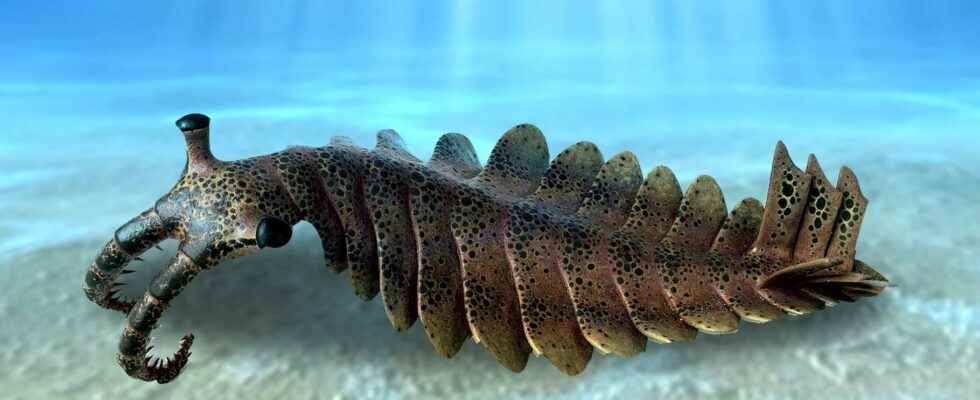The Cambrian explosion can be observed in different deposits, notably that of Chengjiang, in China. A new study of this site shows that the life of the first animals, more than 500 million years ago, originated in a delta.
You will also be interested
[EN VIDÉO] 5 animals that are living fossils The platypus, nautilus, cockroach, coelacanth or pig-nosed turtle have evolved very little over millions of years.
About 530 million years ago, during the Cambrianthe Earth experienced a zoological big bang with the sudden appearance of a multitude of animal, vegetable and bacterial species. Among the witnesses of this cambrian explosionthe Chengjiang Biota, a site — in Yunnan, southwest China — that yields an exceptionally diverse fauna of fossil assemblages in which details of external and internal anatomical features have been incredibly well preserved .
More than 250 species of various fossils have been found there, such as arthropods (ancestors of woodlice, centipede, spidersscorpion, insects) as well as the first vertebrates (ancestors of mammalsbirds, reptiles, amphibians and Pisces) providing a multitude of clues about the environment in which these organisms developed and multiplied.
An international collaboration between the universities of Yunnan, Exeter, Saskatchewan, Lausanne, Leicester and the Chinese Academy of Sciences, was formed on this site and gave rise to this new study published in the journal NatureCommunications. This large team of scientists assessed the sedimentary environment that existed at the time of the Chengjiang deposit, i.e. around 520 million years ago, using the latest knowledge acquired via the data collected in the field, the modelization deposits and sediment flow experiments.
The environment of the first animals on Earth
This study shows that the biota of Chengjiang was formed by a variety of flow types which indicates the influence of a delta subject to that of rivers and waves. It would therefore seem that most of the animals in these places lived in a delta rich in oxygen and nutrients but with a salinity unstable and rates of sedimentation students. Evidence of sea currents in the past environment also indicates that the area was affected by floods issues of storms.
These results are very important because they indicate that the first animals survived unstable conditions and stressful factors, contrasting with the current of thought that animals colonize deeper and more stable marine environments. Finally, this unstable environment could have contributed to the adaptation of species as well as their diversification.
Interested in what you just read?
